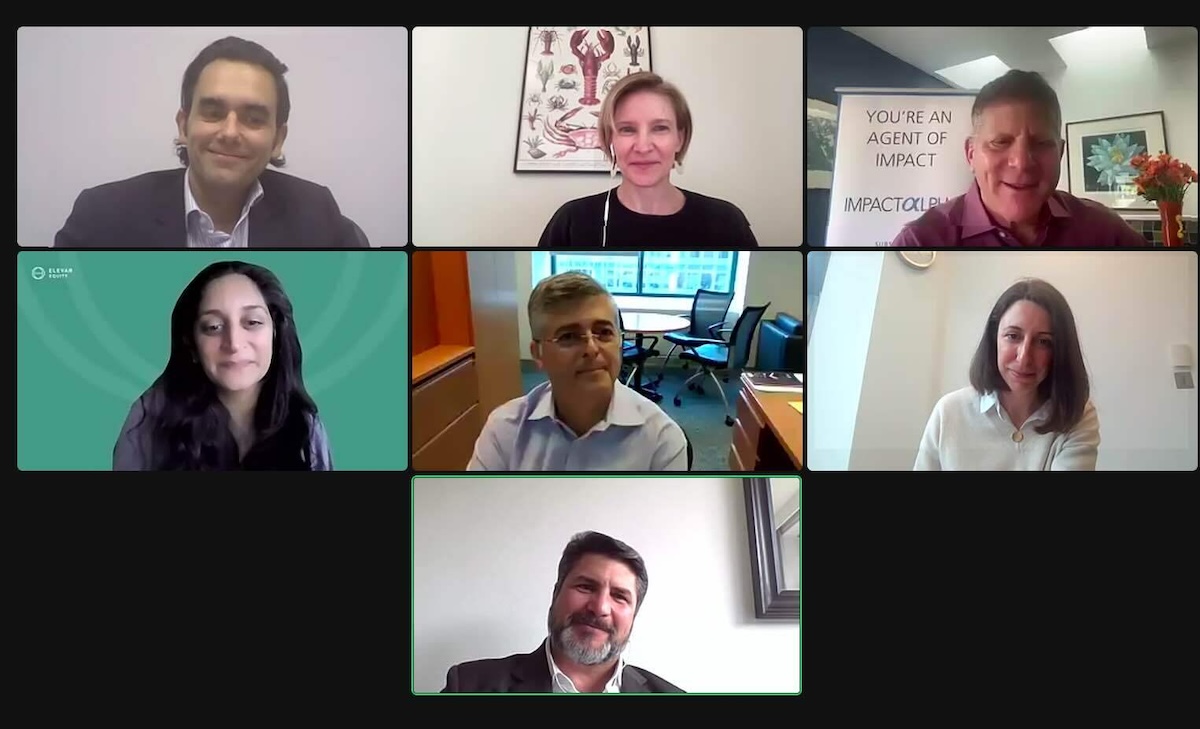ImpactAlpha, Feb. 11 – ”$100 a ton?” exclaimed CDP’s Paula DiPerna on ImpactAlpha’s Agents of Impact Call this week. “I should be popping champagne.”
With the price for a ton of carbon topping $100 on Europe’s emissions trading scheme and rising elsewhere, the call was abuzz with talk of global carbon markets, offsets and credits, green premiums, blockchain and registries.
“This is a wake up call,” she said. “People see that there’s a high cost to inaction, per ton.”
Driving the rising price of carbon: Demand for carbon reduction – including from corporations making their net-zero pledges – has outstripped the supply of high-quality credits and offsets from projects that remove or reduce the gas. And corporations and funds stockpiling carbon credits in anticipation of higher future prices are further fueling the rise.
The price of carbon is being felt from corporate boardrooms to investment funds to farms and is starting to have its intended effect: shifting capital to green alternatives and hastening the transition to a low-carbon economy.
The consequence of carbon becoming a tradeable asset are even more far-reaching. Some posit we are in the early stages of a revolution in finance in which carbon – or rather the reduction of it – becomes the dominant commodity of the 21st century.
Cambrian explosion
The Call examined carbon economics from the perspective of corporations looking to reduce their carbon risk and funds investing in carbon and decarbonization tech. If ever there was a use-case for blockchain-based distributed ledgers, it may be the crediting and retiring of carbon credits. And we capped the call with a plan to flip carbon from a cost to an asset, with a form of carbon quantitative easing that is being called a Global Carbon Reward.
Carbon signals are already driving capital to regenerative agriculture, restoration and other nature-based projects that can sequester carbon. ReGen Networks has been building a blockchain-based marketplace to originate such projects and match them with buyers.
“Everybody wants to be able to pre-purchase their carbon and know that they have it taken care of, because they’re all feeling the squeeze,” said ReGen’s Gregory Landua. He has seen prices for regenerative ag credits on the voluntary markets more than double, to $15 or $16, over just the past two months.
ReGen is one of a crop of new startups and projects working on “ReFi,” or regenerative finance. “There’s been an explosion of interest at the intersection between blockchain, web 3 and crypto – whatever you want to call it – and climate carbon finance,” said Landua. “It’s just a huge Cambrian explosion of interest and new startup projects.”
“By buying and holding, we exacerbate that supply, demand imbalance and help drive the price up,” said Edwin Datson of Estabrook Carbon, one of the funds emerging to capitalize on carbon pricing. Though such trading may not drive fresh funds to carbon reduction or removal projects, Datson said, “The important point, is the capital markets as a single signaling mechanism.”
Green premiums
The rising price of carbon – in addition to growing pressure from customers and investors – is shifting the calculus for corporate spending. In Europe, carbon prices are shrinking the so-called “green premium,” the extra cost for decarbonized alternatives for steel, cement, or shipping. At $100 or more a ton, paying up for offsets becomes expensive and green alternatives make more economic (and marketing) sense. Green premiums give way to brown ones.
That’s already flipped in energy – solar is the cheapest form of new energy. The price on carbon is accelerating the flip in those other industries as well, from steel to fertilizer, noted Emmanuel Legarrigue of General Atlantic, the $86 billion private-equity investor.
General Atlantic’s BeyondNetZero project is keying on those opportunities. “We’ve seen similar phenomena in batteries and other things,” he said. “Having a higher price than everybody would have thought at this stage for a ton of carbon is going to accelerate that transition.”
Corporations that do not fall under regulated markets such as the European Union’s Emissions Trading System are purchasing offsets in voluntary carbon markets. And more than 260 companies around the world have adopted carbon prices for internal use, to identify carbon risk and inform investment decisions.
“They know that at some point, their operations may fall under a mandatory reduction regime,” noted DiPerna.
Carrots and sticks
A high price on carbon reflects its real value and drives green alternatives. But if that raises the prices on transportation, heating or food, the backlash could derail decarbonization efforts (cf. France’s 2018 Yellow Vest movement). The key is be to make the green solutions cheaper, and make people feel richer.
“You need to combine this with breakthrough technologies that will bring a deflationary impact, because otherwise, the society at large will never accept the transition,” warned Legarrigue.
That’s where Delton Chen comes in. The Global Carbon Reward may sound familiar to readers of the cli-fi thriller The Ministry for the Future, by Kim Stanley Robinson. World governments, after a huge climate catastrophe, mint a Carbon Coin to pay for radical decarbonization. Robinson got the idea from Chen, an Australian engineer turned monetary theorist.
The big idea: to finance global decarbonization by valuing – and rewarding – the “positive externalities” of emissions reduction without exacting such a cost on the economy, or the public at all.
The Global Carbon Reward would complement regulatory and punitive approaches to reducing carbon. “Why don’t we think about the carrots and the sticks together?” asked Chen. “The Global Carbon Reward is a carrot that could be globally introduced with a carbon currency.”
Chen envisions a new international institution—called a Carbon Exchange Authority—that would issue the carbon currency and set its long-term floor price, in a sort of carbon quantitative easing. Central banks would provide a guarantee that the value of the carbon currency will never fall below the floor price, thereby attracting private investors to buy the carbon currency as an investment.
With time running out for action by the end of this critical decade, “Should we stick with our current policy toolkit which we’re familiar with now, and hope it will work?” asked Chen. “Or should we invest in other options and opportunities? I think we should do the latter. We should be innovating as much as possible.”
Cambrian Explosion, indeed. DiPerna warned that the economics and social dynamics of the arriving Carbon Era are still opaque to most of the public.
“I’ve learned that you’ve got to have public support,” said DiPerna. “We just maybe need to take the disruption part a little slower, and try to coalesce around what people can comprehend.”












